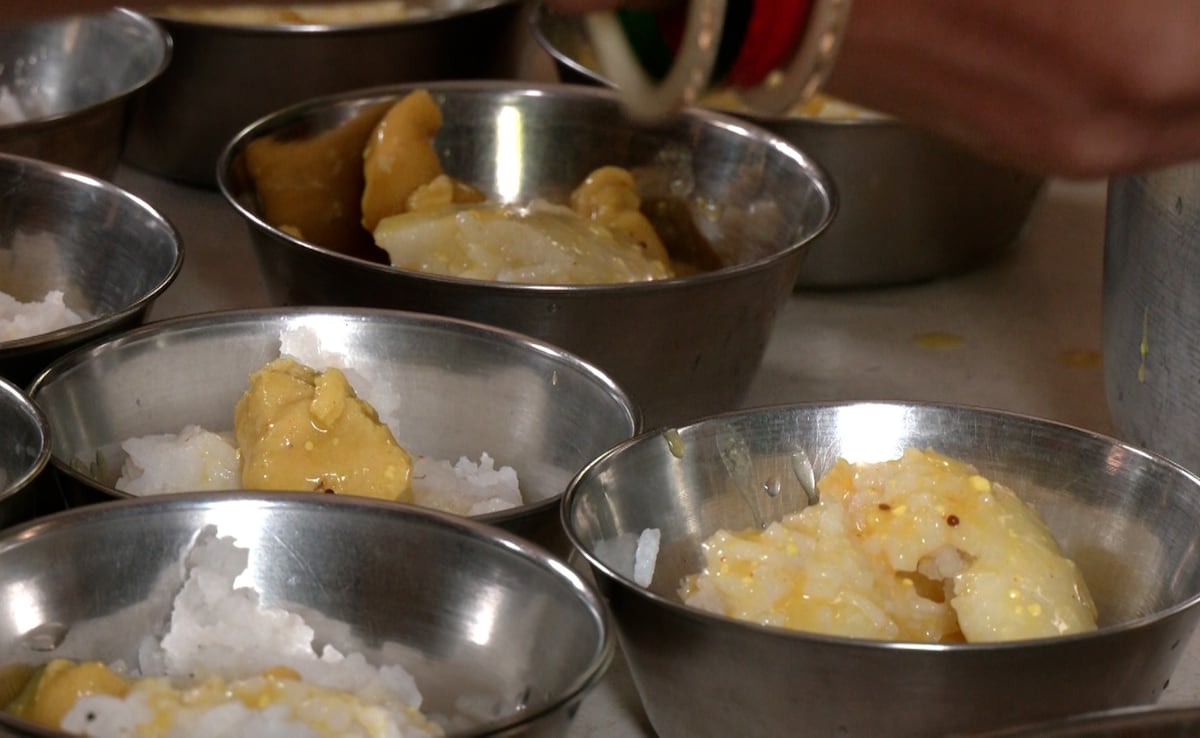Rs 12 Per Child To Tackle Malnutrition In Madhya Pradesh. Is It Enough?

Over 1.36 lakh children are currently malnourished in Madhya Pradesh, but the state government's daily allocation for severely malnourished children remains a modest Rs 12. The question remains: Can this budget effectively combat the malnutrition crisis?
Two years ago, an NDTV investigation revealed the fraudulent mishandling of crores worth of nutrition supplies, with documentation showing these supplies being transported on motorcycles, cars, and even auto-rickshaws on paper. Despite the attention the scandal garnered, not much has changed since.
Recently, Madhya Pradesh's Energy Minister, Pradyumn Singh Tomar, visited a government school in Gwalior to inspect the quality of the midday meals provided to children. What he found was far from encouraging: A watery meal with no soybeans or potatoes, raising questions about the effectiveness of the government's nutrition program.
According to the latest data from the central government's Nutrition Tracker, published in June 2024, 40 per cent of children attending Madhya Pradesh's Anganwadis are stunted, while 27 per cent are underweight. These centres provide daily meals for Rs 8 per child. However, experts question whether this amount is sufficient to meet the necessary nutritional benchmarks, including 12-15 grams of protein and 500 calories per meal.

For severely malnourished children, the government increased the allocation to Rs 12 per day, which is meant to provide 20-25 grams of protein and 800 calories. However, with inflation and the rising cost of food, can this minimal budget truly nourish children and support their development?
The challenge becomes even more apparent when comparing basic daily expenses. A bottle of water costs Rs 10, and a litre of full cream milk is priced at Rs 33. If these essential items are already so costly, how can a child's nutrition be adequately addressed on such a limited budget?
Data tabled in the Madhya Pradesh Vidhan Sabha earlier this year illustrates the extent of the crisis. As of January 30, 2024, 1,36,252 children were registered under the Mukhyamantri Bal Arogya Samvardhan Program as malnourished. Among them, 29,830 were categorized as suffering from severe acute malnutrition (SAM), while 1,06,422 children were identified as moderately acute malnourished (MAM).
Activist Sandhya Shaili argues, "The allocated funds are insufficient. We cannot say for sure whether the required calories are being met. Instead of relying solely on Anganwadis, the government should explore other avenues to combat malnutrition."
Nutritionist Samrah Hussain echoes the concerns about funding, stating, "The current budget is not enough. It should be increased to Rs 40-50 per day, depending on the child's age. Rs 8-12 is simply inadequate."
In response to this crisis, Madhya Pradesh has set ambitious goals under its Vision 2047 to combat malnutrition. By 2025, the state aims to reduce stunting among children under five to below 33%, decrease the rate of underweight children to 25%, and lower the incidence of wasting to below 8%. However, many officials admit that achieving these targets will require greater financial support from the central government.
Nirmala Bhuria, Madhya Pradesh's Minister for Women and Child Development, emphasized the state's reliance on central funding, saying, "It's the central government that decides the funds. We have requested an increase in these rates so that we can provide better nutrition. After all, our children are the foundation of our future. Currently, we are observing Nutrition Month to ensure children receive the best possible care."
Despite the government's efforts and plans, Madhya Pradesh continues to grapple with high infant mortality rates and widespread malnutrition.
























